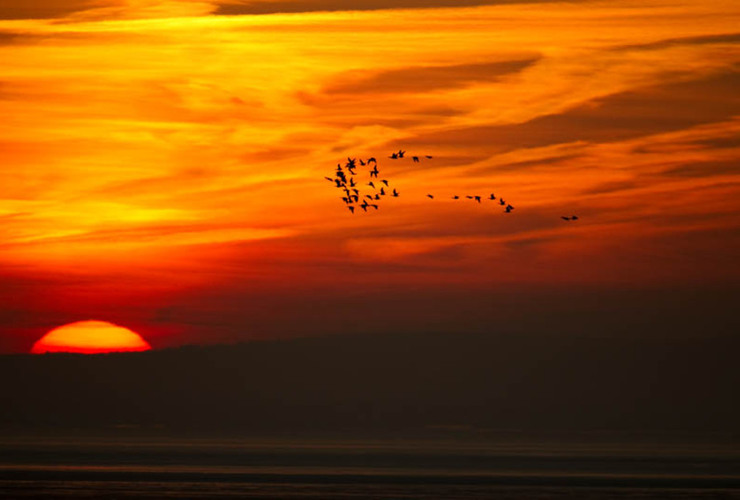Field Notes: Signs of autumn
Quinag conservation officer Romany Garnett enjoys the seasonal changes the shorter days are bringing
 The wind swung round to the north recently bringing with it a welcome sharpness and nip in the air. Riding on the current of this favourable wind, skeins of pink-footed geese appeared in the skies, one after another, with a distant ‘wink, wink’ sound accompanied this sight. They are on their way south migrating from Iceland and Greenland. During a volunteer day at Little Assynt Tree nursery a skein of whooper swans flew overhead, necks outstretched and flying quite low. They are massive, weighty birds (can weigh up to 11kg) and are powerful flyers, migrating 100s perhaps 1000s of miles to southern European regions for the winter. They travel in family groups and are very loyal, pairing often for life. They are good parents too, with cygnets staying on with their parents well into the following year.
The wind swung round to the north recently bringing with it a welcome sharpness and nip in the air. Riding on the current of this favourable wind, skeins of pink-footed geese appeared in the skies, one after another, with a distant ‘wink, wink’ sound accompanied this sight. They are on their way south migrating from Iceland and Greenland. During a volunteer day at Little Assynt Tree nursery a skein of whooper swans flew overhead, necks outstretched and flying quite low. They are massive, weighty birds (can weigh up to 11kg) and are powerful flyers, migrating 100s perhaps 1000s of miles to southern European regions for the winter. They travel in family groups and are very loyal, pairing often for life. They are good parents too, with cygnets staying on with their parents well into the following year.
Lower to the ground amid the wonderful array of brown, auburn and russet coloured leaves underfoot it has been a good year for fungi. Out exploring with Lochinver wildlife watch group recently on a fungi foray; we encouraged them to draw and identify mushrooms through the woods. We came across puffballs that were very popular with the children as the brown cloud like dust spores were released. During snack time excited voices came running with a new discovery: "bumblebees are mating, bumblebees are mating." On a tree nearby, two bumblebees had been found mid courtship.
Once mated these queen bumblebees will feed on pollen and store as much fat as possible ready for the long winter. They will soon be hibernating deep underground, with only the queen in the colony surviving through until the next year.
It has been a good year for brambles too - providing a good food source for the hoverfly, blackbird and pine martin, amongst others. If fingers can negotiate prickly thorns then ripe brambles are a distinctive autumnal delicacy.
As the nights draw in the red stags continue their rut (mating). The stags look very impressive just now with big manes and antlers. Their primal roar through the inky darkness of the night sounds a bit like it is coming from the bowels of the earth.

